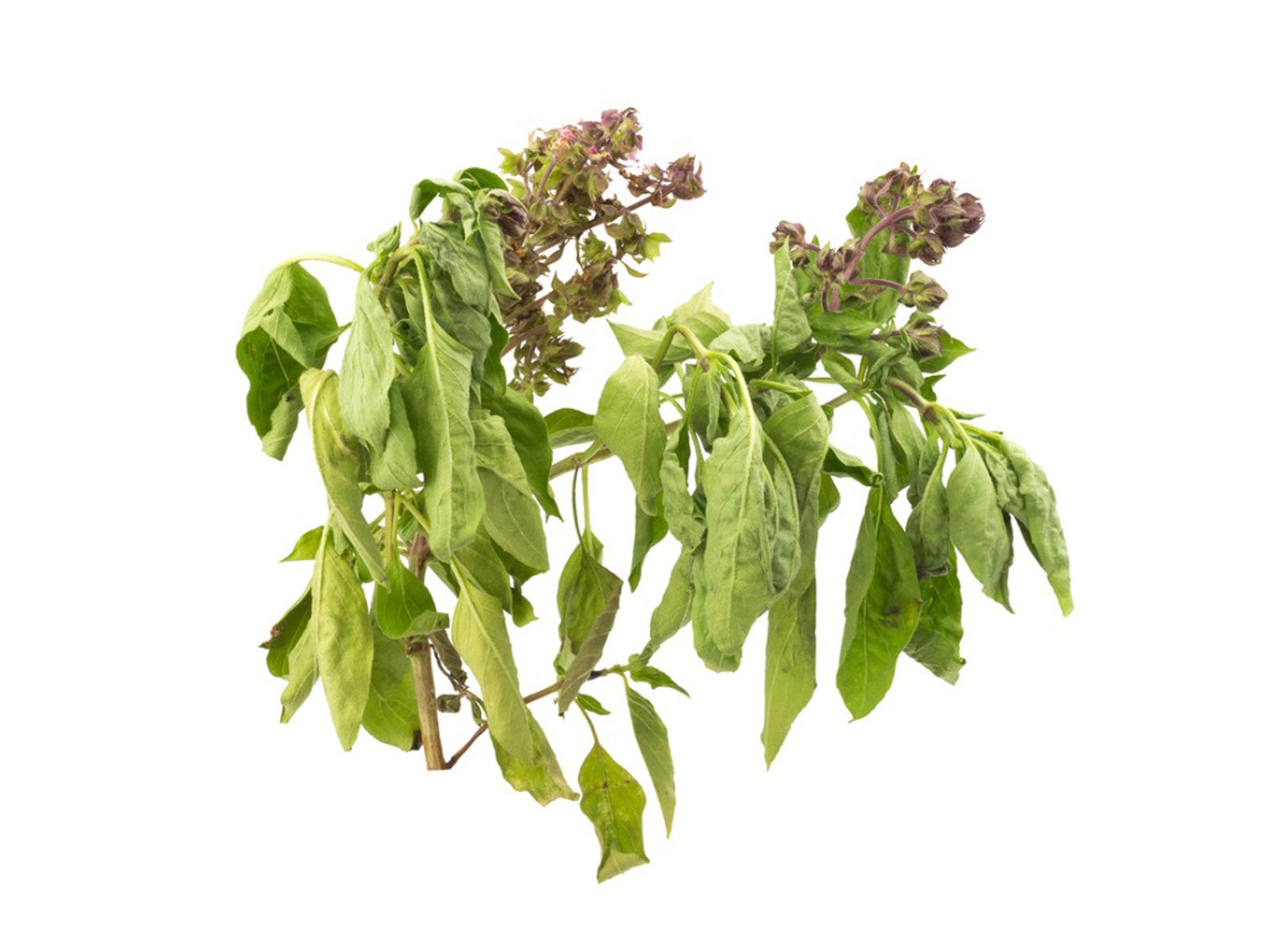Why Does Basil Wilt: How To Fix Droopy Basil Plants


Basil is a sun-loving herb valued for its bright green foliage and distinctive flavor. Although basil is usually easy to get along with, it can develop droopy leaves that can ultimately shorten the life of the plant. Read on to learn more about why your basil is starting to wilt and what can be done about it.
Why Does Basil Wilt?
Healthy basil plants require at least eight hours of sunlight every day, well-drained soil, and enough space to allow for plenty of air circulation. If you are meeting the plant's basic needs and your basil plant keeps falling over anyway, there may be a more serious problem.
Fusarium Wilt
Basil plant droop that appears suddenly on young plants is often caused by fusarium wilt, a fungal disease that causes stunted growth and droopy, wilted, or yellow leaves. The first signs of trouble are decreased growth and leaves with a cupped appearance. Eventually, leaves may drop from the plant. Fusarium wilt is difficult to manage and can remain in the soil for 8 to 12 years. If you suspect your plant is infected with fusarium, you'll probably have to start fresh with a new plant in a completely different location. Prevention is the best solution for fusarium wilt. Purchase healthy, disease-resistant plants. If you plant basil seeds, be sure the package indicates the seeds are fusarium tested.
Root Rot
Root rot is another common reason for droopy basil plants. Rot is a water-borne disease generally caused by improper irrigation or poorly drained soil. Let the soil dry slightly between watering, but don't allow it to become bone dry. If the basil is in a pot, ensure the plant drains thoroughly after watering and never let the pot stand in water.
Leaf Spot
If your basil plant is starting to wilt and you notice brown, water-soaked spots on the leaves, it may be infected by various fungal diseases known as leaf spot. Remove affected leaves at the first sign of infection. To prevent the disease, water at the base of the plant and never use a sprinkler or spray attachment. If the disease isn't serious, a fungal spray may help.
Pests
Aphids, spider mites, and other insects can suck the sap from basil, which may cause droopy leaves. Most sap-sucking insects are easily removed by spraying the leaves with an insecticidal soap spray. Use the spray strictly according to directions. Never spray the plant when the sun is directly on the foliage, or when temperatures are above 90 degrees F. (32 degrees C.).
Gardening tips, videos, info and more delivered right to your inbox!
Sign up for the Gardening Know How newsletter today and receive a free copy of our e-book "How to Grow Delicious Tomatoes".

A Credentialed Garden Writer, Mary H. Dyer was with Gardening Know How in the very beginning, publishing articles as early as 2007.
-
 Looking For Plants To Give You The Soft And Fuzzies? Try These 5 Fuzzy Leaf Plant Options
Looking For Plants To Give You The Soft And Fuzzies? Try These 5 Fuzzy Leaf Plant OptionsLovers of texture, drama, silver foliage and tactile plants will adore these special sensory garden additions. These fuzzy leaf plant options will leave you all aglow
By Susan Albert
-
 Get Ready For A Summer Of Hummers! Grow These Full Sun Hummingbird Plants and Flowers
Get Ready For A Summer Of Hummers! Grow These Full Sun Hummingbird Plants and FlowersIf you’re lucky enough to enjoy a sunny backyard, make sure you are maxing out on your pollinator opportunities and grow these full sun hummingbird plants and flowers
By Tonya Barnett